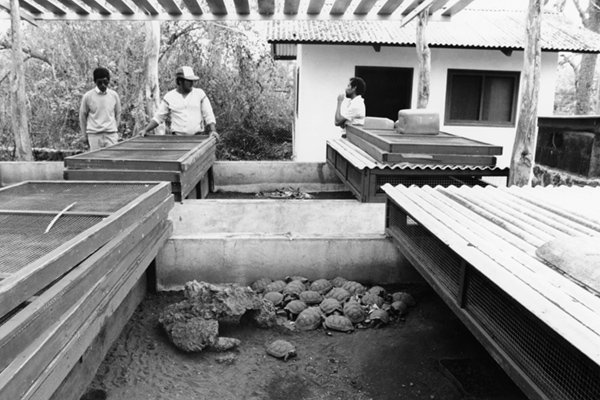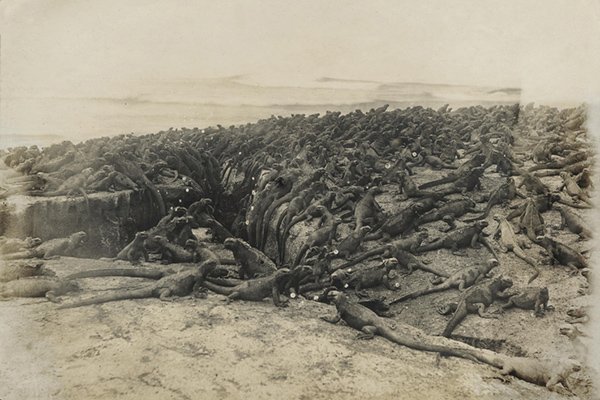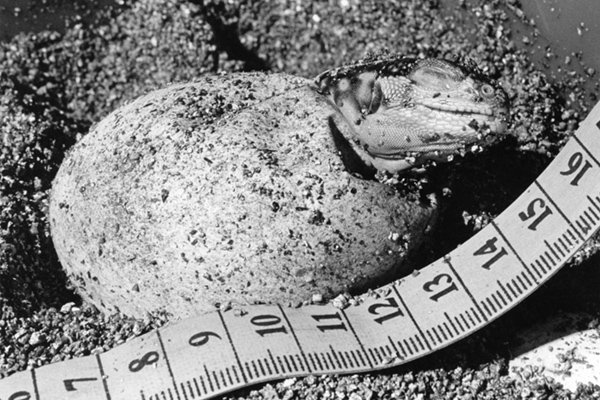
Author: Juan Manuel García
The Charles Darwin Foundation (CDF) for the Galapagos Islands, in its 61 years of existence, has represented, in the best possible way, the search for scientific knowledge in the Galapagos Islands. For this reason, we wanted to commemorate this anniversary by taking a trip to Galapagos and CDF’s past, in order to understand the evolution of the challenges that the archipelago faces today.
The scientific community’s desire to learn more about these islands, so iconic for science, and conserve it for the future, was reflected in the creation of the CDF in 1959. Likewise, the establishment of the Charles Darwin Research Station (CDRS) in 1964 brought scientists from all over the world together in one place.
The creation of the Galapagos National Park, in 1959 as well, was an important step towards the necessary conservation of the archipelago. Scientific research would lay the foundations of the conservation plan that would be carried out in the Galapagos.

To understand the origins of these initiatives, we have launched a new series titled “Charles Darwin Foundation History”. In this new blog, we will collect memories, experiences and analysis of the beginnings of the CDF from various collaborators who have joined us throughout this journey.
In this blog’s first posts we review some of the memories from Peter Kramer (CDF Director from 1970 to 1973) and Tjitte de Vries (CDF Biologist from 1965 to 1975), current members of CDF’s General Assembly.

The Galapagos Islands’ reputation, originated by Charles Darwin's discoveries in these islands, began to spread throughout the planet. Images of the enchanted islands, inhabited by unique species that live without human contact, traveled the world in various magazines and wildlife documentaries. These elements were key to shaping an image of the Galapagos, which we know to this day.
The documentary "The Galapagos: Darwin's World within Itself" released in 1971 by the Encyclopedia Britannica, is one of the documentaries that showed the beauty of the archipelago.
Curiously, the images of Galapagos’ biodiversity that can be seen on this documentary, from almost 50 years ago, do not differ much from the images that we see today in wildlife documentaries about the archipelago. The only difference being, obviously, the advance in the technology that was used to record these images. But are these images a real representation of what the Galapagos is and how it has changed during these decades?
In the same way in which the images from the Galapagos’ wildlife have not changed throughout time, it is interesting to note that one of the ideas mentioned in the 1971 documentary, as in many others from that time, is the fragility of these islands and the danger they run if nothing is done to change the development dynamics that were implemented in most parts of the world during this time.
Today, the same questions still arise. How can we achieve a balance between the conservation of the Galapagos ecosystems and the well-being of the human community that inhabits these islands? How to ensure that the Galapagos and its Marine Reserve are not affected by the mismanagement of natural resources in the rest of the world?

Our efforts continue to seek solutions to these challenges, with the support of institutions and individuals worldwide. Over time, many more organized groups have dedicated themselves to finding solutions to these big questions. Nonprofit organizations, public and private sectors, educational institutions, artists and organized community groups, among many others, have worked for the conservation of the Galapagos for several decades.
However, new threats constantly arise for the conservation of these islands, such as the introduction of invasive species, the excessive increase of tourism and climate change. Although Galapagos is geographically isolated from the rest of the planet, threats have found a way in, on this increasingly globalized world.
The current health crisis has proven that it is now impossible to live in isolation from the rest of the planet. It is necessary to join forces with national, regional and international actors in order to prevent the threats that affect Galapagos from expanding. Additionally, our commitment is necessary, in order to continue the efforts carried out by those who have sought the conservation of the Galapagos.

Lastly, and with the intention of sharing our scientific work for the conservation of the Galapagos with a much wider audience, on July 23 we made a live virtual tour of the Charles Darwin Research Station. During this visit, our Executive Director, María José Barragán, as well as our scientists, Gustavo Jiménez, Paola Lahuatte and Esme Plunkett, guided the public and shared the work carried out at CDF.
We would like to thank each and every one of those who have worked during these 61 years for the conservation of the Galapagos through science. We look forward to many more anniversaries!
-ENDS-





